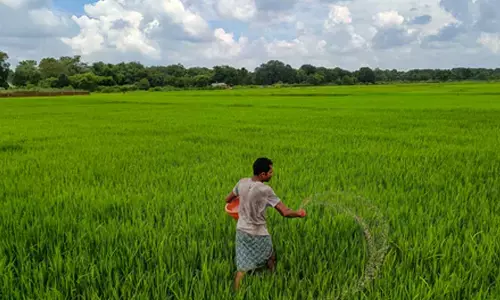The looming danger of reinfection

The looming danger of reinfection
A team of scientists from the Indian Council of Medical Research (ICMR) has identified a set of most plausible cases of reinfection of SARS-CoV2 virus in India
A team of scientists from the Indian Council of Medical Research (ICMR) has identified a set of most plausible cases of reinfection of SARS-CoV2 virus in India. The scientists examined the cases of 1,300 individuals who had tested positive for the virus twice and had undergone tests even between the two positive results. The study found that the cases of 58 of the 1,300 individuals, or 4.5 per cent, could actually be classified as possible reinfections. In these 58, the two positive results had come at least 102 days apart, and they also had a negative test result in between.
The study is based on telephone interviews with people selected from ICMR's laboratory database of at least 80 million individuals tested between January 22 and October 7, 2020. The government has been working on a definition for 'reinfection' of cases since October. The 4.5 per cent who were found infected were people infected in the first wave. "This is an averaged out figure over a period of about eight months — January to October 2020 —, which will vary with behaviour and intensity of epidemic," said Dr Balram Bhargava, director general, ICMR.
India has now breached one lakh cases limit and deaths have touched more than 700, as a month-long surge continued in the country. With this, the country's tally has risen to 12,485,509 and its death toll to 164,623, the health ministry's dashboard showed at 8 am of April 4. India, the third-worst country hit by the pandemic, on April 3 reported 89,129 Covid-19 cases in a day, the highest daily rise in around six-and-half-months. This was the highest daily figure since September 20 last year — 92,605 infections were recorded in 24 hours on that day.
The 714 fatalities in a day were also the highest since October 21. The number of daily Covid-19 cases peaked on September 17 last year with 97,894 infections recorded on that day. India began witnessing a gradual decline in cases of the coronavirus disease after that. India has again begun to record the highest number of daily infections in the world. Even in terms of the seven-day rolling average of daily cases, a more reliable indicator of trends, India's tally of nearly 73,000 is the highest in the world, especially since Brazil's graph has been declining over the past few days.
It's not yet clear why the state of Maharashtra is reporting more than half of India's daily infections, while other populous states, such as Uttar Pradesh, Bihar and West Bengal, are yet to witness a steep rise. There is no shortage of potentially super-spreader gatherings in West Bengal, where large political gatherings are being organised every day. Maharashtra's Chief Minister Uddhav Thackeray, in his televised address on April 2, said his state is not "hiding" anything, which was a swipe at the low testing numbers of the other states.
What is of utmost interest here is not just the number of cases per day but the percentage of reinfection. This should come as a warning to all those who think they would never again be re-infected having gone through the agony of Covid-19. Indians have shown remarkable restraint during the last year's lockdown. It is time for a self-restraint again. The danger is not yet completely over.

















